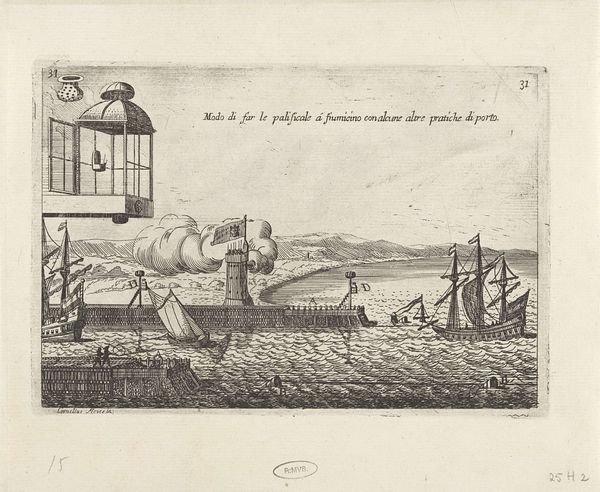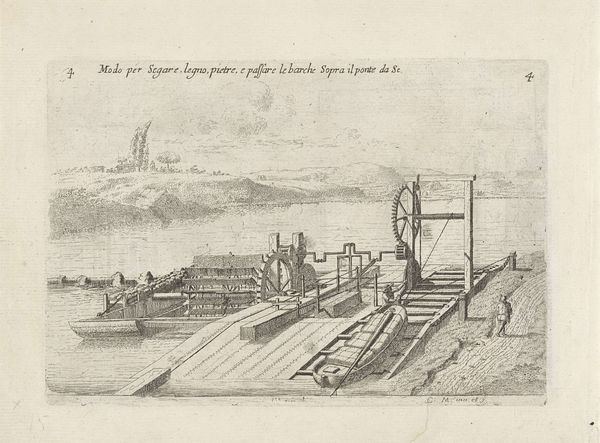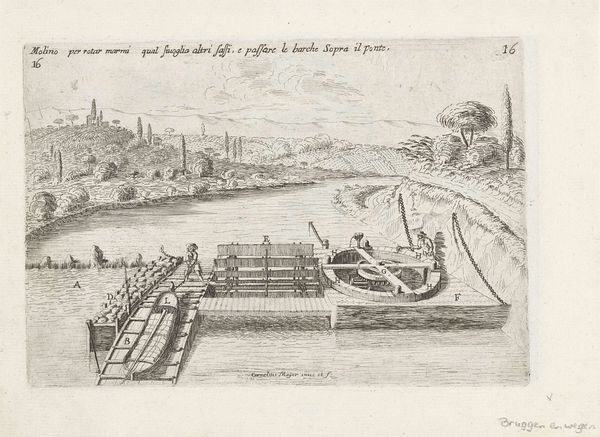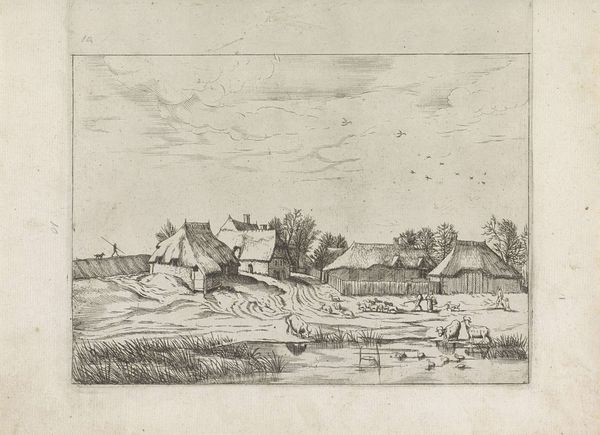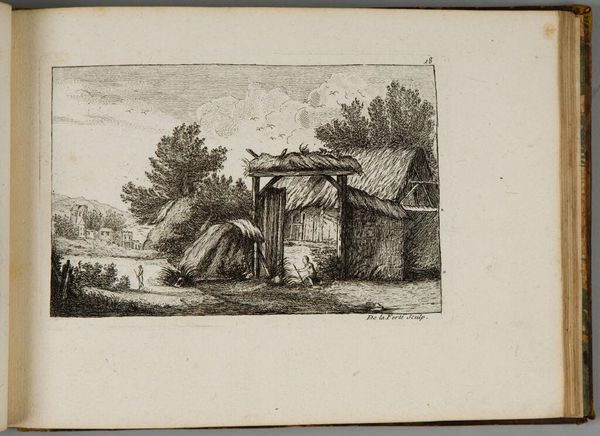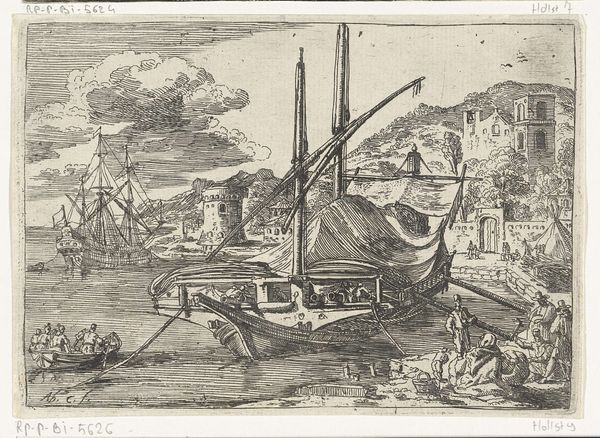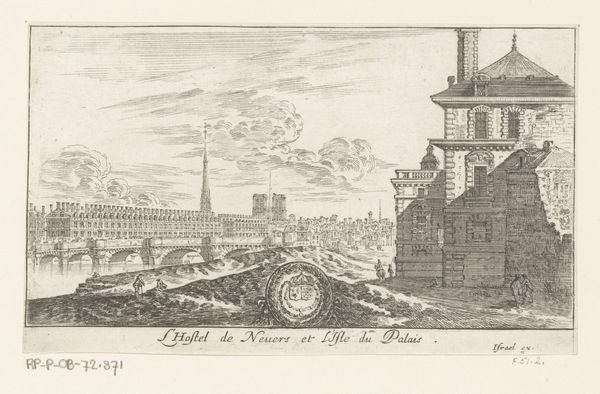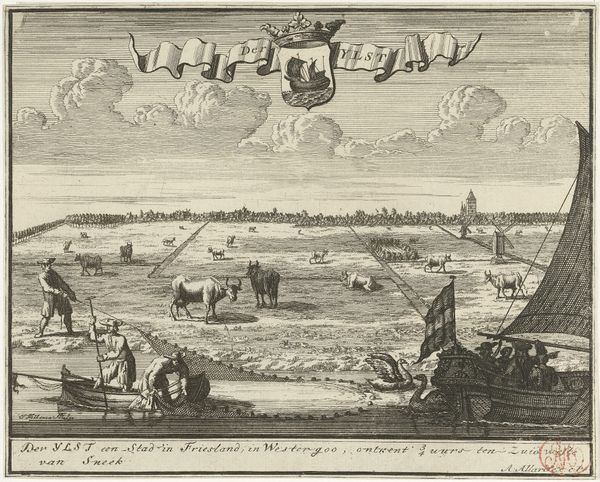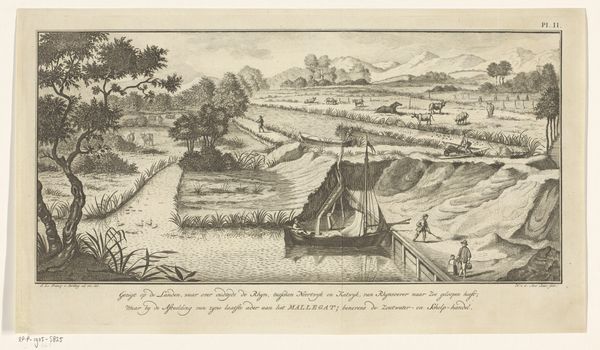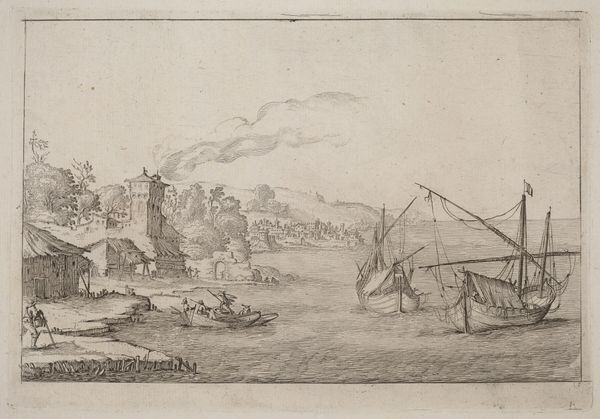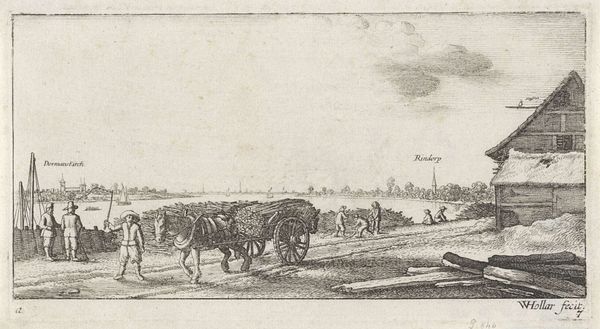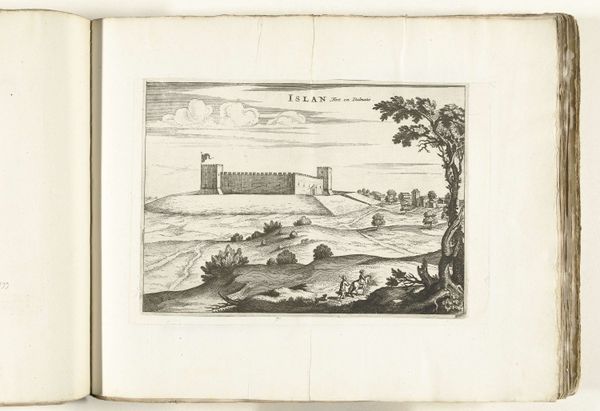
print, engraving
#
dutch-golden-age
# print
#
landscape
#
geometric
#
line
#
cityscape
#
engraving
Dimensions: height 147 mm, width 212 mm
Copyright: Rijks Museum: Open Domain
Editor: This is "Graanmolen bij een overtoom," or "Grain Mill by an Overtoom," an engraving created in 1683 by Caspar van Wittel. I find the level of detail in such a small-scale print impressive. What do you see in this piece, especially given its medium? Curator: Immediately, I'm drawn to the printmaking process itself. Van Wittel meticulously translates the landscape, the mill, the very structures of labor into a network of lines. This elevates printmaking, typically viewed as reproductive labor, to an independent and significant form. Editor: I see the connection, but does that shift our understanding of the subject itself – the grain mill? Curator: Absolutely. The mill becomes more than just a site of grain production. It’s an object whose materiality—the wood, the gears—is meticulously rendered and becomes entwined with the labor of the engraver. He’s depicting a site of industry but also engaging in one, right? Consider the social context. Prints like these circulated widely, making the representation of labour and industry accessible to a growing merchant class. Did they buy prints of mills as some kind of capitalist appreciation? Editor: That’s fascinating to consider. So the print itself participates in the economic landscape it depicts, rather than just representing it. Curator: Precisely. It’s both image and commodity, reflecting and reinforcing the era's material culture. Does noticing that alter how you read other details of the piece? The arrangement of water, boat, architecture - the infrastructure that this society needed for industry. Editor: I think it does. Now I'm seeing the grain mill not just as a building, but as part of a complex system of production, all meticulously documented through a laborious printing process. Curator: And by seeing the links between process, object, and the social context, we understand more of its history. Editor: I never would have thought to analyze an image like that. Thanks!
Comments
No comments
Be the first to comment and join the conversation on the ultimate creative platform.
